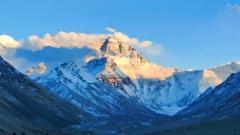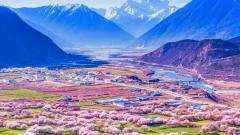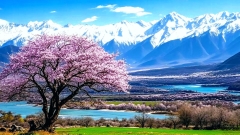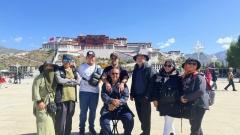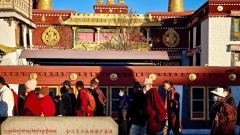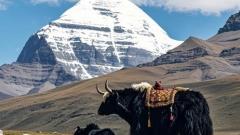Perched on the highest plateau in the world, Tibet’s ancient culture has long been intertwined with the forces of nature and the mysteries of life and death. Among its most profound and evocative rituals is the sky burial – also known as the celestial funeral—where the departed are offered to the circling vultures. This practice, deeply rooted in Tibetan Buddhism and Bon traditions, embodies compassion, impermanence, and the final act of generosity. In this article, we explore the origins, procedures, beliefs, and regional variations of the Tibetan sky burial, and how it fits within the broader tapestry of Tibetan funeral customs.
What is Sky Funeral in Tibet?
At its essence, a sky burial is a ritualized disposal of the human body by exposing it to scavenging birds—primarily vultures—on a remote mountaintop. It is one of the most widespread and accessible funeral rites for ordinary Tibetans, especially in rural areas where other methods (such as cremation) may be impractical or prohibitively expensive.
- Spiritual Offering: In Tibetan Buddhist thought, every act of generosity—including giving one’s body to nourish other living beings—brings merit. By offering their corpse to vultures, the deceased perform a final act of compassion.
- Symbol of Impermanence: As the body is consumed by birds, mourners witness firsthand the transient nature of physical form, reinforcing the Buddhist teaching that all compounded things must dissolve.
- Accessible Ritual: Unlike elaborate ceremonies reserved for high lamas or nobility, sky burials require minimal resources. A suitable site, a skilled “body breaker,” and ritual chants suffice.
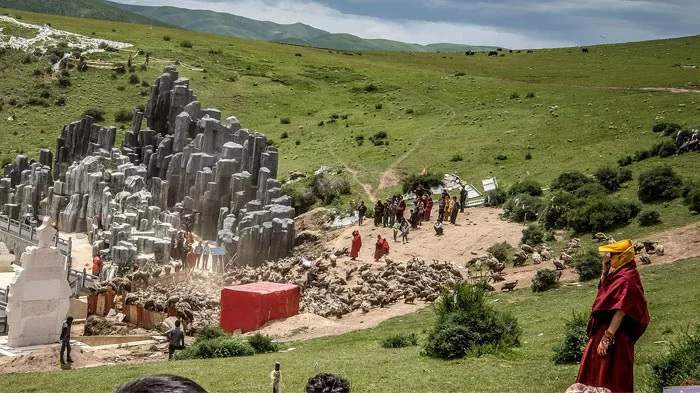
Ritual Preparations and Mantra Chanting of Sky Funeral
When a Tibetan passes away, the family undertakes a period of preparation designed to ease the transition of the soul and ensure the ritual’s success:
- Three‑ to Five‑Day Vigil:
The body is washed, dressed in simple white cloth, and placed in a secluded corner of the home. During this time, monks or lamas recite sacred scriptures aloud around the clock to guide the soul through the bardo (intermediate state) and toward liberation. - Creating a Sacred Space:
Household activities cease, and the family maintains silence and calm. This tranquillity is believed to facilitate the soul’s smooth ascent and protect it from lower realms. - Auspicious Timing:
Divination methods—such as consulting oracles or astrologers—determine the most propitious day for the burial. Tibetan culture places great importance on aligning rituals with favorable cosmic energies.
Journey to the Celestial Platform
On the appointed day, the body embarks on its final journey to the sky burial site:
- Carrying the Corpse:
A body carrier (རོ་གྱ་པ rogyapa) bears the wrapped corpse across valleys and ridges to a secluded, elevated location, far from towns and fields. This platform—often atop a hill or mountain spur—provides a vantage point for circling birds. - Preparing the Corpse:
At dawn, the body carrier removes the shroud and positions the corpse in a seated, fetal posture: head bent against the knees, arms folded around the legs. This compact form is believed to make the body more accessible for dissection and consumption. - Lighting “Su” Smoke:
Aromatic herbs called “su” are burned to attract vultures. Their distinctive resinous scent lures the birds from miles around, ensuring a swift and dignified consumption.
The Role of the Celestial Burial Master
Central to the sky burial is the body breaker – a specialist trained from youth in the precise and respectful dismemberment of the corpse:
- Clinical Precision and Laughter:
Contrary to expectations of solemnity, body breakers often carry out their work with light-hearted conversation or laughter. This atmosphere dispels fear and sorrow, helping the soul remain unencumbered by grief as it moves onward. - Dismemberment Process:
Using a sharp blade, the body breaker separates flesh from bone in a methodical sequence. Flesh pieces are placed on rocks for vultures to devour, while larger bones are later ground into fragments. - Tsampa Offering:
The pulverized bones are mixed with tsampa—barley flour, Tibet’s staple food—and offered to the birds. This mixture, called namkha, sustains the vultures and completes the ritual of feeding.
Philosophical Foundations of Sky Funeral
The practice of sky burial is inseparable from Tibetan Buddhist views on life, death, and compassion:
- Generosity (Dāna):
Offering one’s body is considered the highest form of giving, benefiting sentient beings (the vultures) while accruing spiritual merit. - Karma and Liberation:
The act signals a sinless departure. When vultures consume the flesh, it is interpreted as the final purification of karmic impurities. The soul is then free to ascend toward paradise or re‑birth. - Sanctity of the Vultures:
Condors and raven-like vultures that frequent sky burial sites are deemed holy birds. They feed exclusively on human remains and are believed to assist in transporting the soul skyward.
Taboos and Observances of Sky Funeral
Certain restrictions safeguard the efficacy of the ritual and the dignity of the deceased:
- No Spectators:
Only the body carrier, the burial master, and a few monks may attend. Relatives and strangers must keep their distance, as their presence is thought to distract the soul or generate negative energies. - Collecting Remains:
Any bones or scraps left behind are considered sacred. Monks collect these fragments, burn them with mantras, and scatter the ashes—preventing attachment of the spirit to the physical world. - Seasonal and Environmental Constraints:
During harsh winters, sky burials may be postponed or supplemented by other rites, such as stone burials or temporary storage in charnel grounds until vultures return.
Notable Sky Burial Sites
While sky burials occur across Tibet’s rural expanses, two destinations draw particular interest from pilgrims and anthropologists:
- Drigung Til Monastery (Maizhokunggar County):
Perched on a sheer cliff face some 150 km east of Lhasa, this monastery’s celestial platform overlooks the dramatic Mum Pa Valley. Pilgrims come to pay respects and sometimes witness the ritual from a respectful distance. - Larung Gar Buddhist Academy (Sichuan Province):
Near Sertar in Garze Prefecture, this sprawling monastic settlement hosts sky burials on nearby hillsides. With a vibrant student population numbering in the tens of thousands, Larung Gar blends scholarly study with deep devotion to ritual practice.
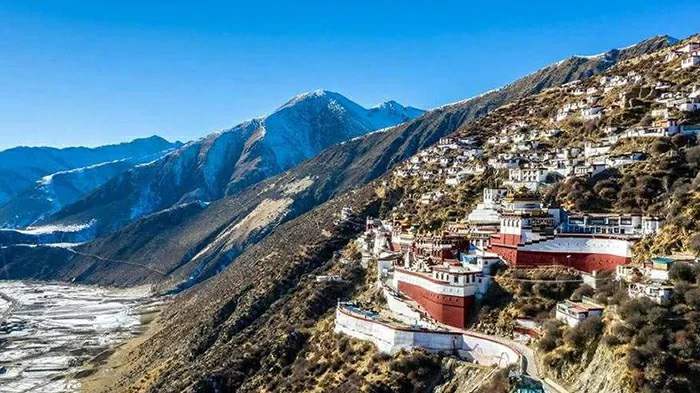
Other Tibetan Funeral Traditions
Sky burial is only one arrow in Tibet’s rich quiver of mortuary customs, each chosen according to social status, religious directives, and local ecology:
- Stupa (Chorten) Interment:
Reserved for high lamas and revered masters, the embalmed body is adorned with saffron, medicinal herbs, and precious metals before being entombed in a monumental stupa for perpetual veneration. - Fire Burial (Cremation):
Once limited to aristocrats and senior monks, cremation involves burning the corpse atop a pyre of wood soaked in butter. Ashes may be enshrined in a “mourning tower” alongside sacred texts and ritual instruments. - Water Burial:
In river valleys where vultures are absent, the body—wrapped in pristine white cloth—is consigned to flowing waters. This practice carries symbolic cleansing and is sometimes viewed as less meritorious where sky burial remains dominant. - Tree Burial:
More common in southeastern Tibet, especially for children, this rite suspends the corpse in a wooden cage from a remote forest tree, keeping it safe from scavengers until decomposition. - Earth Burial (Inhumation):
Now rare, this method once prevailed among nomadic clans. It is typically reserved today for victims of contagious disease or violent death, when vultures must not approach. - Cliff Burial:
In certain southern valleys, coffined bodies are placed in natural rock alcoves hundreds of feet above ground, combining elements of sky and earth burial in a single dramatic tableau.
Sky Burial – The Eternal Gift
Tibetan sky burial is more than an ecological disposal of the dead; it is a culmination of Buddhist compassion, a final demonstration of selflessness, and a vivid lesson in the impermanence of flesh. For pilgrims and scholars alike, witnessing the celestial funeral – when approached with humility and respect—offers profound insights into how one culture confronts mortality with dignity and grace.




